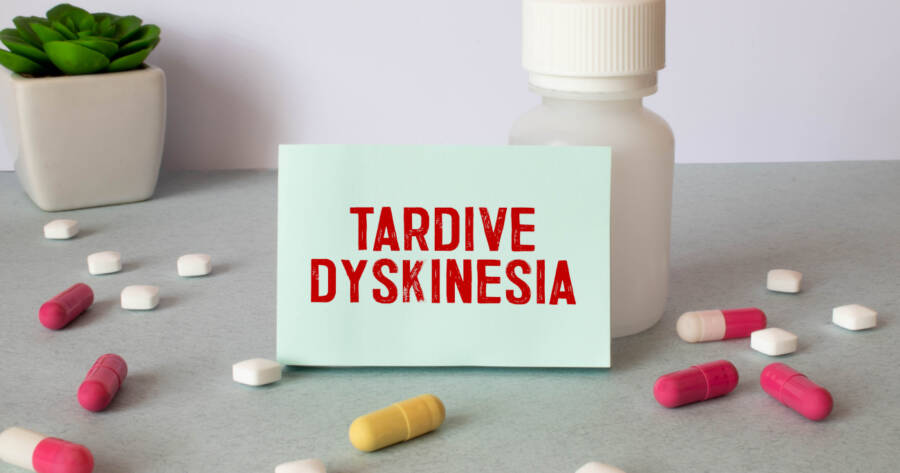Tardive dyskinesia (TD) is characterized by involuntary, repetitive body movements. Given how the symptoms of tardive dyskinesia can often be misdiagnosed, it’s helpful to research this information online before consulting a doctor.
Often associated with long-term use of certain psychiatric medications, TD can impact the quality of life of those affected. Understanding the risk factors and implementing effective prevention strategies is crucial in managing this condition.
Understanding Tardive Dyskinesia
Tardive dyskinesia is primarily linked to prolonged use of neuroleptic drugs, also known as antipsychotics, used to treat psychiatric conditions like schizophrenia, bipolar disorder, and severe depression.
These involuntary movements can include grimacing, tongue protrusion, lip smacking, puckering, and rapid eye blinking. While the exact mechanism of how these medications cause TD is not fully understood, it is believed to be related to changes in brain neurochemistry after long-term drug use.
Key Risk Factors for Tardive Dyskinesia
While the precise cause of TD remains somewhat elusive, research has identified several key risk factors that significantly increase the likelihood of its development. Understanding these risk factors is crucial for both patients and healthcare providers to mitigate the risks associated with long-term antipsychotic therapy.
Long-term Medication Use
The most significant risk factor for developing TD is the prolonged use of antipsychotic medications, particularly older, “first-generation” antipsychotics. The risk increases with the duration of medication use and the total cumulative dose.
Age and Gender
Older adults are at a higher risk of developing TD, with the risk increasing with age. Additionally, women, especially postmenopausal women, are more prone to developing TD compared to men.
Psychiatric Conditions
Individuals with certain psychiatric conditions, particularly those requiring long-term antipsychotic treatments such as schizophrenia, bipolar disorder, and depression, are at an elevated risk.
Substance Abuse
Substance abuse, particularly alcohol and drugs that affect the nervous system, can increase the likelihood of developing TD.
Prevention Strategies for Tardive Dyskinesia
Preventing tardive dyskinesia is crucial for individuals undergoing treatment with antipsychotic medications. The strategies for preventing TD focus on minimizing risk factors associated with its development.
Judicious Use of Antipsychotics
The most effective prevention strategy is the careful use of antipsychotic medications. This includes using the lowest effective dose for the shortest duration necessary and considering alternative treatments when possible.
Regular Monitoring
Patients on long-term antipsychotic therapy should be regularly monitored for early signs of TD. Early detection can lead to adjustments in medication or treatment strategies that can halt or reverse the progression of symptoms.
Lifestyle Modifications
Healthy lifestyle choices, such as a balanced diet, regular exercise, and avoiding substances that can aggravate TD, can play a role in prevention and management.
Education and Awareness
Patients and caregivers should be educated about the risks of antipsychotic medications and the importance of monitoring for symptoms of TD. Being informed can lead to more proactive management of the condition.
Treatment Options for Tardive Dyskinesia
While prevention is key, there are treatment options available for those who develop TD. Switching to a different class of antipsychotics, particularly the newer, “second-generation” antipsychotics which have a lower risk of TD, can be effective. Medications specifically approved for the treatment of TD, such as valbenazine and deutetrabenazine, have shown promise in reducing symptoms.
Emerging Research and Future Directions
Research into TD is ongoing, with studies focusing on understanding the underlying mechanisms and developing new treatment approaches. Genetic studies are exploring why some individuals are more susceptible to TD than others, and clinical trials are testing new drugs and treatment modalities.
The Role of Support and Advocacy
Living with TD or caring for someone who has it can be challenging. Support groups and advocacy organizations play a vital role in providing resources, emotional support, and guidance.
They also work towards increasing public awareness and pushing for advancements in treatment and care standards. Engaging with these communities can offer solace and empowerment for those affected.
Personalized Care Approach
Each individual’s experience with TD is unique, necessitating a personalized approach to care. Collaborating closely with healthcare providers to tailor treatment plans that suit one’s specific needs, preferences, and lifestyle can significantly improve outcomes. This includes regular assessment of medication efficacy, side effects management, and exploring holistic approaches to well-being.
Learn More Today
Tardive dyskinesia is a serious and often preventable condition linked to the use of antipsychotic medications. Understanding the risk factors and implementing effective prevention strategies are key to managing the risk of developing TD.
The journey to understand and manage tardive dyskinesia doesn’t end here. Continue exploring this topic online to stay updated with the latest research, treatment options, and support resources. Whether you are a patient, caregiver, or simply someone interested in mental health, the wealth of information available can provide valuable insights and guidance in navigating this complex condition.



